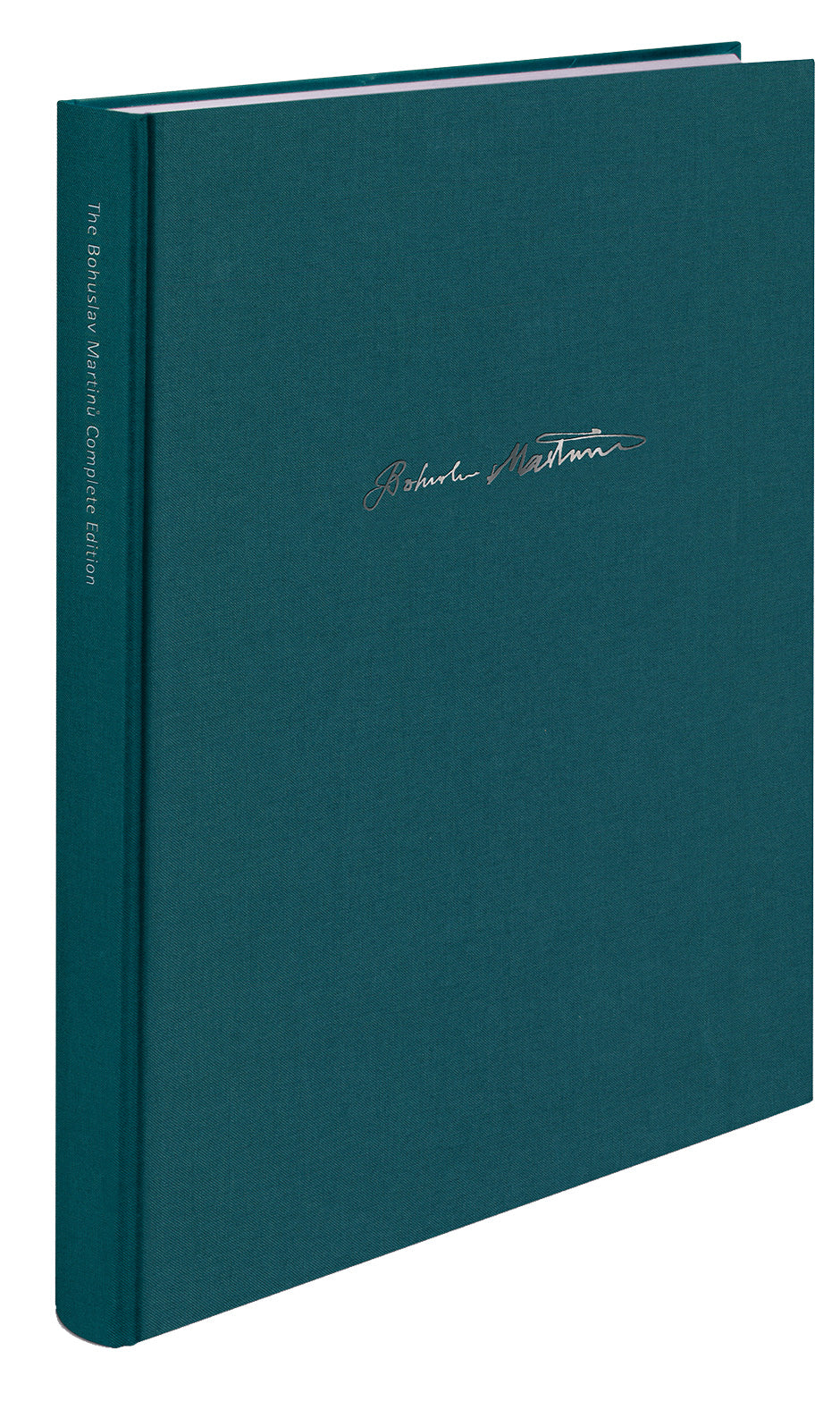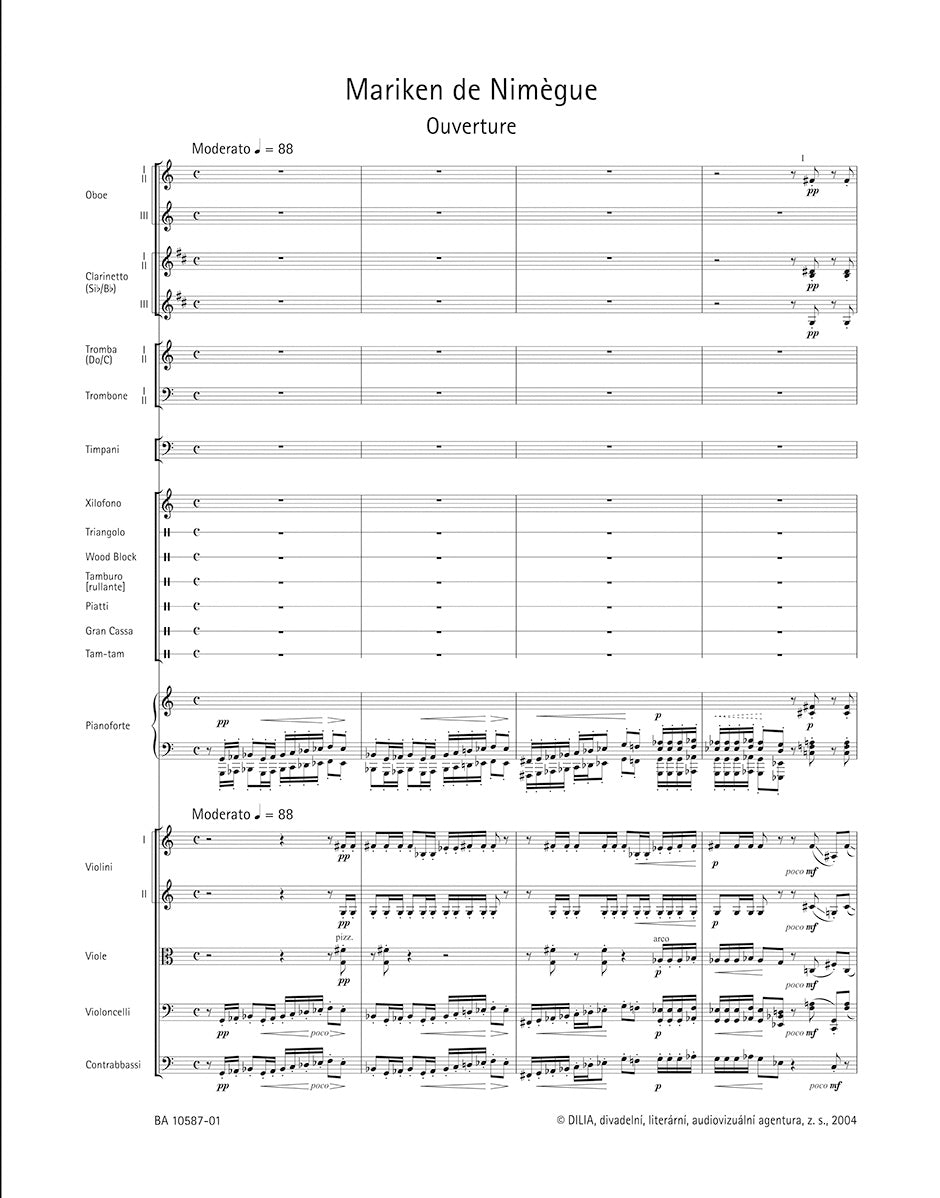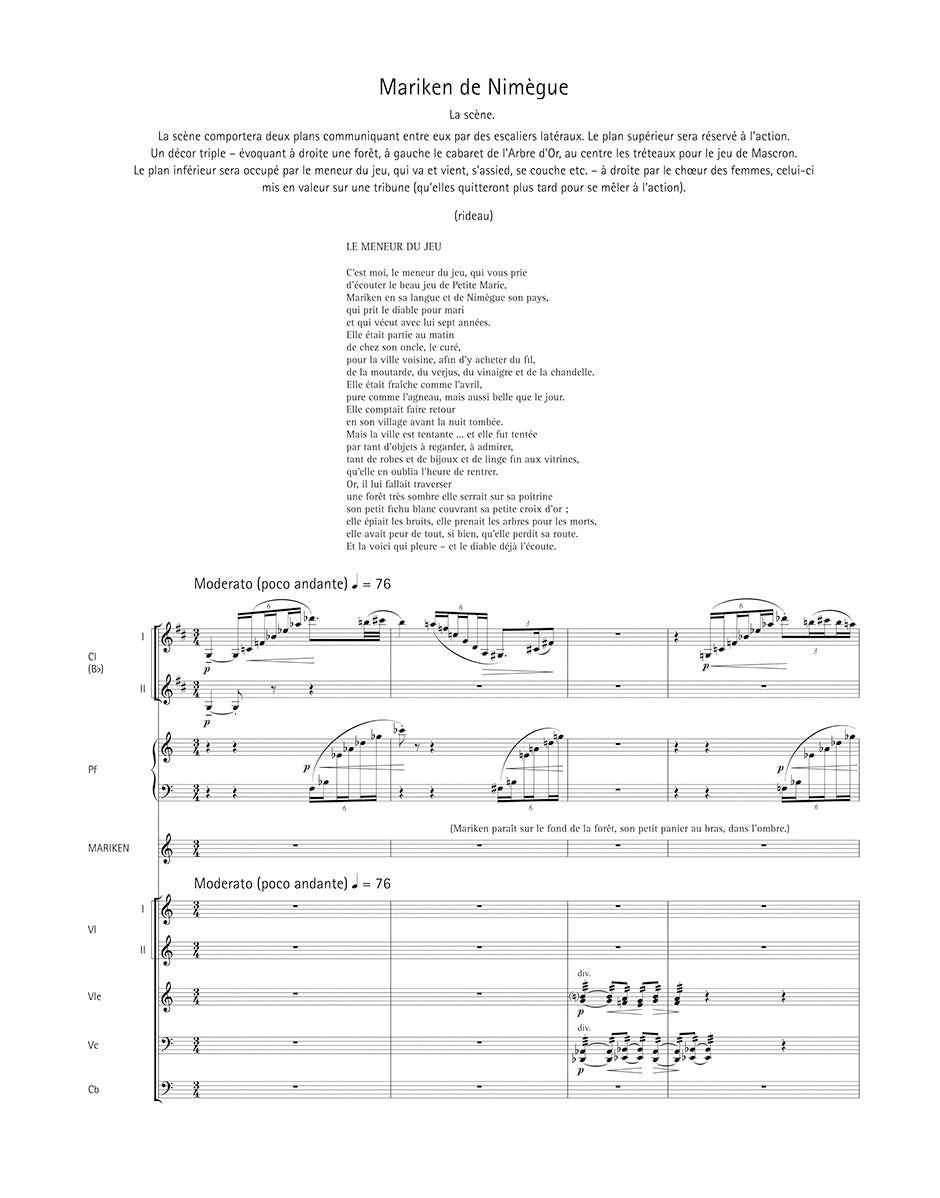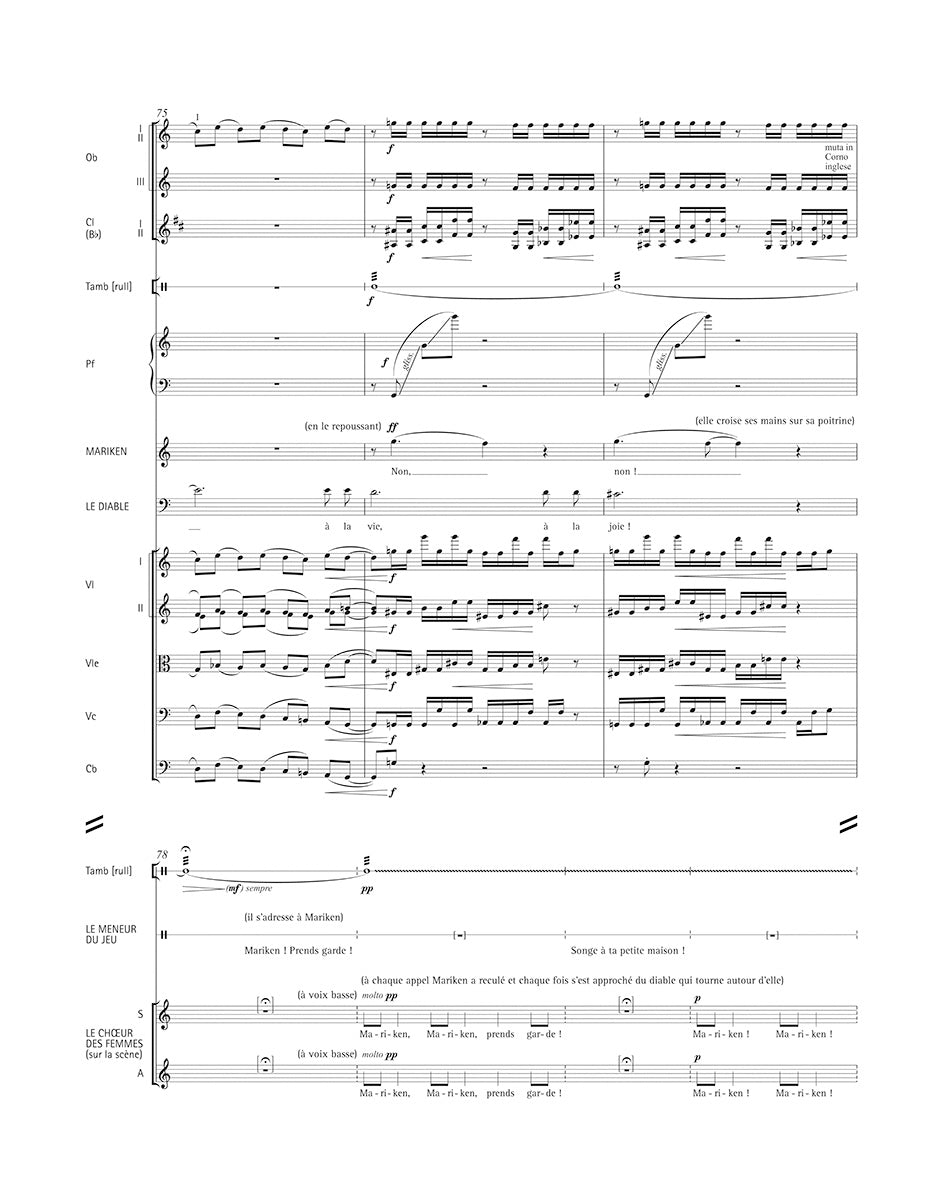Martinů: Mariken of Nimègue, H 236/2 I
Expected to ship in about a week.
- Composer: Bohuslav Martinů (1890-1959)
- Format: Full Score – Complete Edition
- Instrumentation: Opera
- Work: Mariken of Nimègue, H 236/2 I
- Binding: Hardcover
- ISMN:
- Size: 10.4 x 13.2 inches
- Pages: 225
Description
Bohuslav Martinů composed the one-act opera "Mariken de Nimègue" based on a medieval Dutch Marian miracle during his stay in Paris in 1933 to a French text by Henri Ghéon. This is the unpublished and unperformed first version of the opera. The second and final version was created in 1934, which Martinů included in his Czech-language opera cycle "Hry o Marii" (Marian Plays) H 236. The reason for creating the second version was therefore the need to adapt the music to the Czech translation of Vilém Závada's libretto. The first version of the opera differs from the Czech version largely in the orchestration, the setting of the French text and the extensive original musical material, which Martinů no longer used in the second version.
The foreword describes the complicated genesis and fate of the first version of the opera, including the composer's difficulties in finding a suitable librettist. Martinů had originally intended the Czech poet Vítezslav Nezval to be the librettist (a complete sketch of Nezval's libretto can be found in the "Documents" section).
The selected facsimile pages of the autograph score and the vocal score document the composer's cuts and complicated passages in the edition. The Critical Commentary presents all the music and text sources relevant to the edition, including their evaluation.
Publishers use a lot of words to describe what they sell, and we know it can be confusing. We've tried to be as clear as possible to make sure you get exactly what you are looking for. Below are descriptions of the terms that we use to describe the various formats that music often comes in.
Choral Score
A score for vocalists that only contains the vocal lines. The instrumental parts are not there for reference. Generally, cheaper than a vocal score and requires multiple copies for purchase.
Facsimile
Reproductions of the original hand-written scores from the composer.
Full Score
For ensemble music, this indicates that the edition contains all parts on a single system (there are not separate parts for each player). In larger ensembles, this is for the conductor.
Hardcover
Hardbound. Generally either linen-covered or half-leather.
Orchestral Parts
Similar to a wind set, this is a collection of parts. In the case of strings, the numbers listed are the number of copies included, though generally these are available individually (often with minimum quantities required).
Paperback
When publishers offer multiple bindings (e.g. hardcover) or study scores, this is the "standard" version. If you're planning to play the music, this is probably what you want.
Performance / Playing Score
A score of the music containing all parts on one system, intended for players to share. There are not separate parts for each player.
Set of Parts
For ensemble music, this indicates that there are separate individual parts for each player.
Solo Part with Piano Reduction
For solo pieces with orchestra, this is a version that contains a piano reduction of the orchestra parts. For piano pieces, two copies are typically needed for performance.
Study Score
A small (think choral size) copy of the complete score meant for studying, and not playing. They make great add-ons when learning concertos and small chamber works.
Vocal Score
A score prepared for vocalists that includes the piano/organ part or a reduction of the instrumental parts.
Wind Set
For orchestral music, this is a collection of wind and percussion parts. The specific quantities of each instrument are notated.
With Audio
In addition to the printed music, the edition contains recordings of the pieces. This may be an included CD, or access to files on the internet.
With / Without Fingering (Markings)
Some publishers prepare two copies - a pure Urtext edition that includes no fingering (or bowing) suggestions and a lightly edited version that includes a minimal number of editorial markings.






